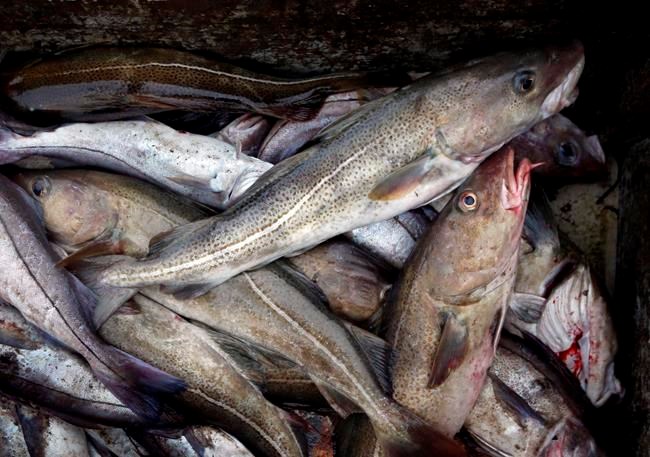OTTAWA — The federal government is biased against listing commercially valuable fish as species at risk and needing protection, environment commissioner Jerry DeMarco said in a new audit published Tuesday.
The audit of Canada's efforts to protect aquatic species at risk was one of six new environmental reports tabled in the House of Commons.
Most of them focused on Canada's efforts to protect biodiversity and keep the estimated 80,000 different species living in its borders from dying off.
"Our reports today demonstrates Canada's biodiversity is at serious risk," DeMarco said.
Under the Species at Risk Act, the Committee on the Status of Endangered Wildlife in Canada assesses different species and recommends whether they should be added to lists of species that are endangered or threatened.
Individual departments then review those assessments and make a recommendation to the environment minister that a specific plant or animal be listed as needing protection under the act.
In the review on aquatic species at risk in particular, DeMarco found Fisheries and Oceans Canada was very slow to act when one of those assessments said a particular aquatic creature or plant is in danger.
And when that assessment relates to a fish with significant commercial value, the department's default appears to be against listing the fish as needing special protection.
"Unfortunately, short-term economic concerns can trump the need for long-term measures to protect the species and we're seeing ... that there's a bias against protecting species with commercial value," DeMarco said.
In all, DeMarco's audit looked closely at nine fish, two mussels and a sea turtle that the endangered wildlife committee assessed as needing protection.¬Ý
Four of the fish, both mussels and the loggerhead sea turtle, all deemed to have no significant commercial value, were all recommended to be listed as species at risk by Fisheries and Oceans.
Five of the fish were marine species with significant commercial value, and in all five of those cases, the department opted against listing the fish as a species at risk.
That includes the Newfoundland and Labrador population of Atlantic cod, steelhead trout, the Okanagan population of chinook salmon, yellowmouth rockfish and Atlantic bluefin tuna.
The report says a moratorium on commercial fishing of the Newfoundland cod was put in place in 1992 and twice since then the wildlife committee assessed it as being "endangered," meaning it faces imminent danger of going extinct.
Listing a species as endangered under the Species at Risk Act would mean it could not be killed, harmed, harassed or captured.
The first assessment on Newfoundland cod came in 2003, and it took three years for Fisheries and Oceans to review the finding. In 2006, the federal department decided against adding it to the Species at Risk Act list, and allowed some inshore fishing and Indigenous harvesting to continue.
In 2010, the committee assessed the Newfoundland cod as endangered a second time. Twelve years later, Fisheries and Oceans still has not finished a review to determine what to do with that assessment.
DeMarco also found it took the department far too long to conduct its own reviews, noting the average time from an assessment to a review was almost four years.
He said Fisheries and Oceans hasn't finished its review for half the 230 aquatic species that the wildlife committee recommended for an at-risk designation since the Species at Risk Act took effect in 2004.
Furthermore, the department was found to have big gaps in what it knows about species that need protection, and not enough staff to enforce protections when they are put in place.
Fisheries Minister Joyce Murray said Tuesday Canada has "some real challenges" when it comes to protecting aquatic species and committed to looking closely at how the department can respond to assessments faster.¬Ý
But she said the Species at Risk Act is only one "tool" available to the department to restore a species when its numbers fall below a specific limit. She pointed to a renewed Fisheries Act that she says requires a rebuilding plan when numbers of a particular species are identified to be a concern.
The commissioner's fall audits also looked at policies to manage low- and intermediate-risk radioactive waste, which accounts for 99.5 per cent of all radioactive waste in Canada.
DeMarco said Natural Resources Canada, the Canadian Nuclear Safety Commission and Atomic Energy of Canada were doing a good job managing the waste.
This report by The Canadian Press was first published Oct. 4, 2022.
Mia Rabson, The Canadian Press




